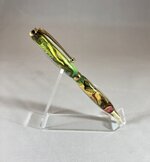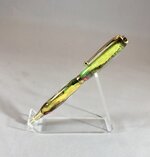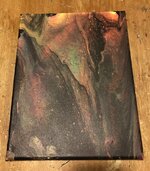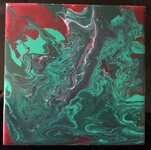Dinosaurnut
Member
This is one of my favorite techniques. I rolled the brass tube in paint that was leftover from a paint pour and then cast it in Smooth-On's Crystal Clear 202 resin. It's assembled on a Slimline.
I let the brass tubes dry for a week before casting them, and then leave them in the mold for 2 days before turning them.
I let the brass tubes dry for a week before casting them, and then leave them in the mold for 2 days before turning them.




